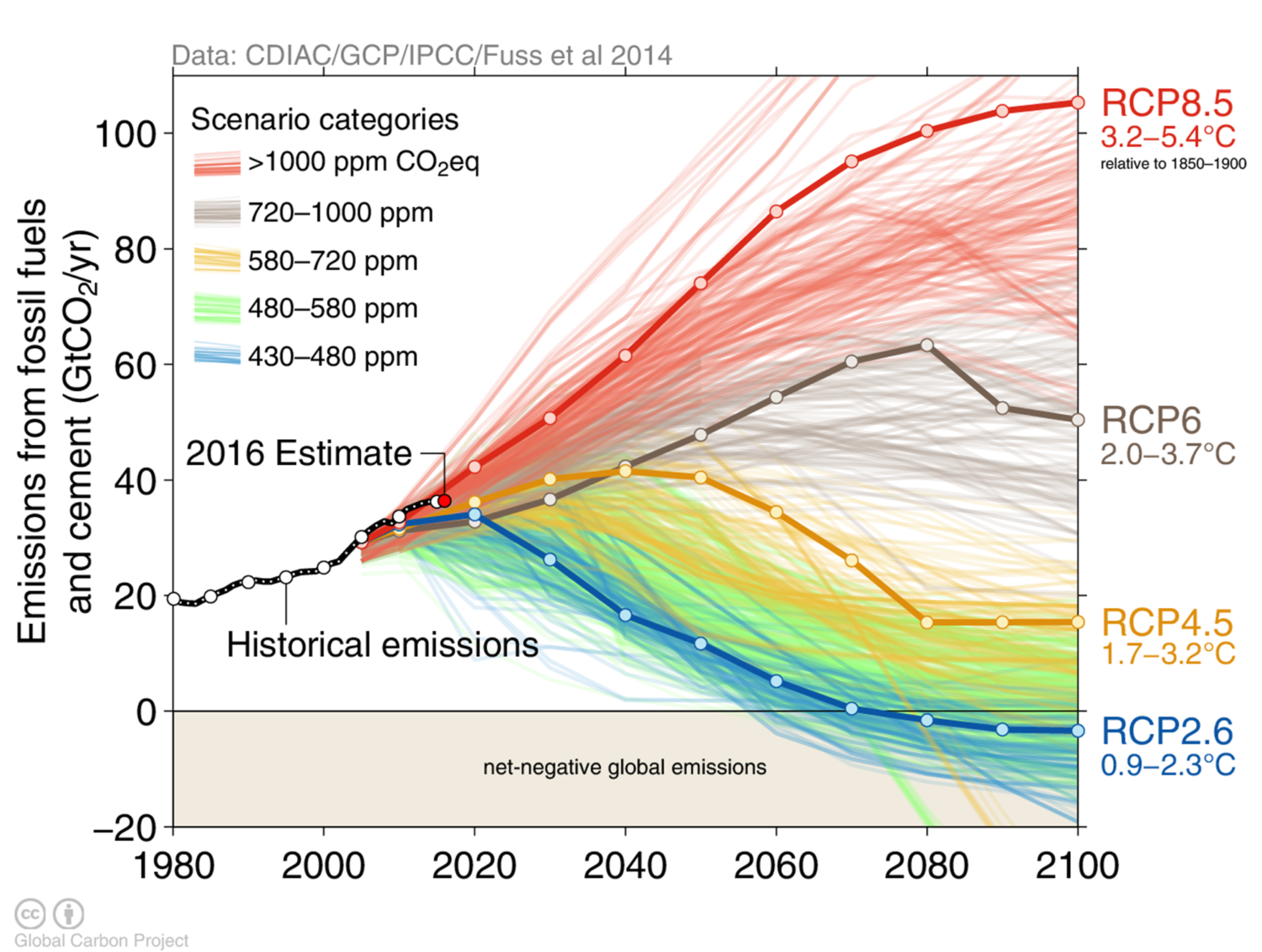- cross-posted to:
- science@lemmy.ml
- cross-posted to:
- science@lemmy.ml
cross-posted from: https://lemmy.ml/post/1451658
A new IIASA-led study explored fairness and feasibility in deep mitigation pathways with novel carbon dioxide removal, taking into account institutional capacity to implement mitigation measures.
Meeting the 1.5°C goal of the Paris Agreement will require ambitious climate action this decade. Difficult questions remain as to how warming can be limited within technical realities while respecting the common but differentiated responsibilities and respective capabilities of nations on the way to a sustainable future. Meeting this challenge requires substantial emissions reductions to reach net-zero emissions globally.
Among the new options being studied in scientific literature, engineered Carbon Dioxide Removal (CDR) like Direct Air Capture of CO2 with Carbon Capture and Storage (DACCS), is a potentially promising technology to help bridge this gap. DACCS captures carbon by passing ambient air over chemical solvents, which can be considered a form of CDR if the captured carbon is stored permanently underground. But whether these novel technologies can help make ambitious goals more attainable, or whether they can help reach them more equitably remains an open question.
In their study published in Environmental Research Letters, an interdisciplinary research group led by IIASA scientists developed new scenarios exploring fairness and feasibility in deep mitigation pathways, including novel CDR technologies. For the first time, the team implemented DACCS in a well-established integrated assessment model called MESSAGEix-GLOBIOM, and studied how this technology could impact global mitigation pathways under different scenarios of environmental policy effectiveness based on country-level governance indicators.
“In current policy debates, concerns about the political feasibility and fairness of the current generation of climate mitigation scenarios are raised, and DACCS is often proposed as a possible solution. In our study we quantified under what conditions and how DACCS might address those concerns,” explains Elina Brutschin, a study coauthor and researcher in the Transformative Institutional and Social Solutions Research Group of the IIASA Energy, Climate, and Environment Program.
The researchers emphasize that the goal of limiting warming to 1.5°C does not change when considering novel forms of CDR. For a broader perspective on pathways to limit warming, the research team investigated how novel CDR interacts under different assumptions of technoeconomic progress and the evolution of regional institutional capacity. The researchers highlight the risks of dependency on unproven carbon removal while also discussing the role novel CDR and similar technologies could play in the future for developing countries.
The results indicate that novel CDR can keep pre-Paris climate targets within reach when accounting for such risks, but that increasing institutional capacity beyond historical trends is necessary for limiting warming to the Paris Agreement’s 1.5°C goal, even with novel CDR processes. The study also suggests that substantially improving institutional capacity to implement environmental policies, regulations, and legislation is critical to keep warming below 2°C if new forms of CDR fail to emerge in the near future.
The authors further point out that, when accounting for the possible future evolution of novel CDR technologies combined with inherent risks, the ‘fairness’ of overall outcomes did not meaningfully improve. DACCS did not impact near-term required global mitigation ambition, and additional carbon removal in developed economies accounted for only a small component of the mitigation necessary to achieve stringent climate targets. This is because the removal of carbon dioxide in these areas does not compensate sufficiently for their historical emissions by mid-century.
The inability of DACCS to enhance the fairness of outcomes, like cumulative carbon emissions, in 1.5°C scenarios, emphasizes the notion that meeting global climate targets is a global effort requiring an ‘all-of-the-above’ mitigation strategy. There is no room for flexibility when it comes to reaching climate goals.
The results, however, show that engineered removals can play a role in making the post-peak temperature stabilization (or decline) phase more equitable. This means that the full timeframe under which accounting takes place is critical for exploring fair outcomes that are agreeable by most Parties to the United Nations Framework Convention on Climate Change (UNFCCC).
“Our results show that new technologies for removing carbon from the atmosphere can play a role in ambitious climate policy, but they won’t be a silver bullet for solving the climate crisis. Developed countries especially need to cut emissions by more than half this decade, primarily by reducing existing sources of emissions while scaling up CDR technologies to be in line with the Paris Agreement,” says study lead author Matthew Gidden, a researcher in the IIASA Energy, Climate, and Environment Program.
The researchers emphasize that there is a clear need for the modeling community to assess the role of novel CDR in a structured way to better understand robust outcomes and insights versus observations related to a given model framework or approach. Looking forward, these issues can be explicitly included in scenario design to arrive at more equitable outcomes while incorporating political realities of the capabilities of governments and institutions to enact strong climate policy.
Carbon Capture is a scam.
Bright Young Things™ come up with an idea for CC. Venture Capitalists give them around 10 million dollars. They fuck around for a bit then say “Oh it doesn’t work at scale” and bugger off with the money.
The venture capitalists don’t care, often they are funded by energy companies too. Its greenwashing for them. Governments don’t care either as they can say “In the future this magic technology will mean we can lock all that CO2 away for ever”.
Rinse and repeat… always repeat.
deleted by creator
This is a tired trope; who lives in a real world where VCs are throwing around 10 million dollars without a care in the world? Now, I will grant that greenwashing is a thriving effort and governments are naturally reactionary. But NONE of that makes either carbon capture (done at point sources) OR CDR (using regular atmosphere) be scams.
@RobCornelius You are on to us! Obviously too smart by half! So, look, send me a DM with your financial data that I can pass along to our Nigerian attorney; and they will be in touch to get you a share of the next ten million. But ixna on the amsca talk - VCs might be listening. The next share might be a little small, momma needs a new yacht.
Carbon removal is undoubtedly necessary, but we also need to keep in mind the amount of carbon we are putting into the atmosphere. The most confronting explainer for this was in this minutephysics video.
To spoil the video a bit:
if you drop all that old life into the container that we call earth and burn them, it turns out that what we burn in one year weighs a hundred times more than everything alive today. Everything! All the living whales and the elephants and the forests and insects and grass and crops and birds and fish and people dogs and cats add up all the carbon in everything alive now and still in one year we burned a hundred times more. Or, to put it another way we humans gobbled up 100 earth’s worth of ancient life (that’s 55 trillion tons) of ancient carbon in a single year
That’s how much carbon we must sink to reverse 1 year of (2018-equivalent) emissions. One hundred earths of biomatter.
I think you are almost 100% correct. This is why we need to be attacking CDR on so many fronts (AND ceasing to burn fossil fuels!). It is ridiculous to think of putting all that carbon back into the earth’s crust in just one way. And the most effective way of doing CDR is going to vary quite a bit from place to place. We have to be flexible. (the “almost” relates to a common bit of shorthand everyone tends to use that can confuse results: sometimes when we say “carbon” we mean “carbon dioxide”. I submit that 55 gigatonnes is actually the latter. It does not matter for order-of-magnitude discussions, but CO2 is only 30% carbon. So I will just do a quick check: the mass of 8 billion people alone is about a half gigatonne, and we are about 20% carbon, so the people represent 0.1 gigatonne of carbon (or more like 0.4 Gt of CO2-equivalent - any way, 55 is a thousand times more; so 100-biospheres per year seems reasonable)




